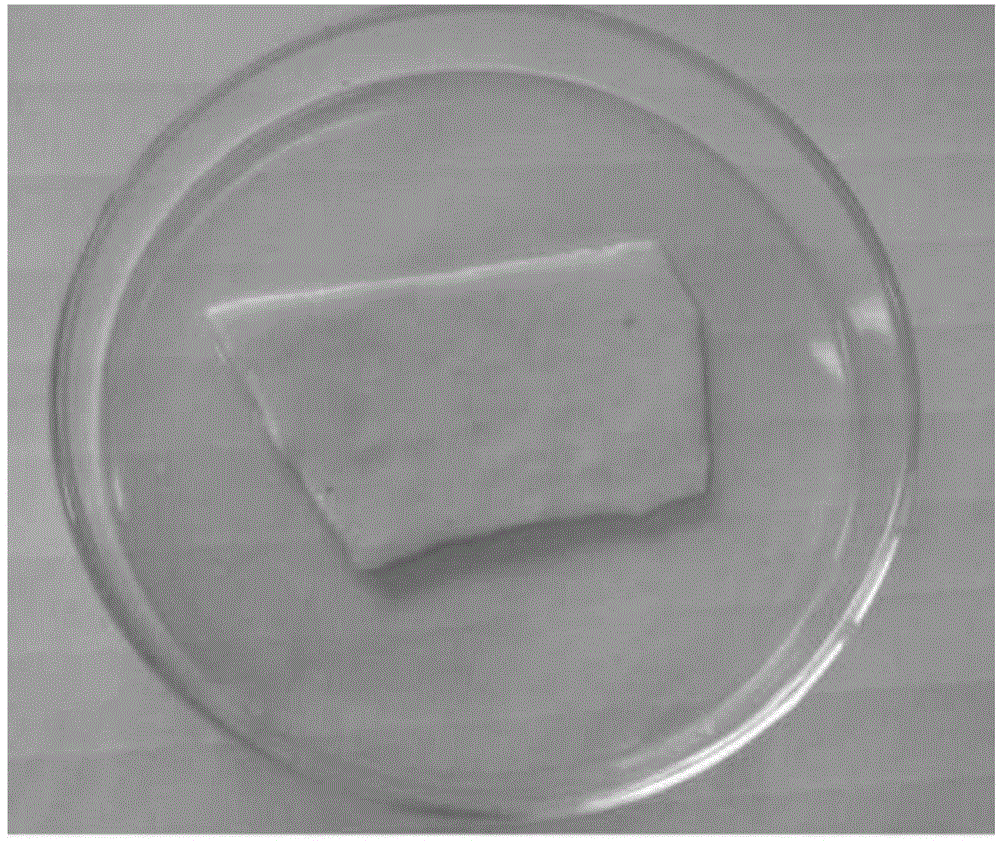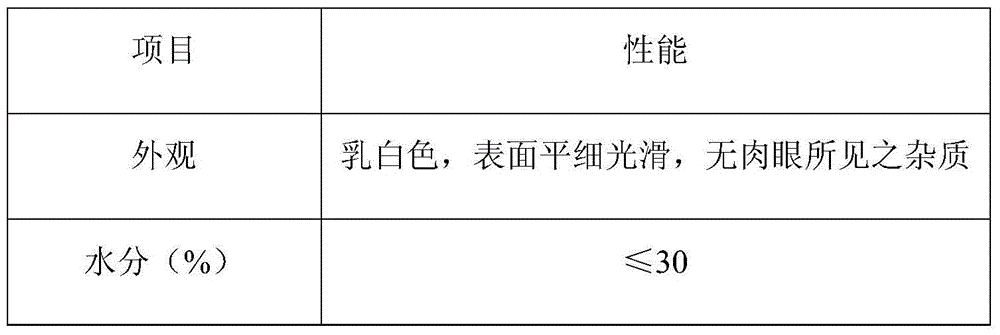Preparation method for acellular xeno-dermal matrix
A dermal matrix and cell-free technology, applied in the field of bioengineering, can solve the problems of poor cell compatibility, low porosity, increase the exposure of antigenic sites to antigen-presenting cells, etc., and achieve the effect of complete three-dimensional structure and low environmental pollution
- Summary
- Abstract
- Description
- Claims
- Application Information
AI Technical Summary
Problems solved by technology
Method used
Image
Examples
Embodiment 1
[0030] (1) Weighing: Accurately weigh the salted pigskin as the basis for counting the following processes;
[0031] (2) Soak in water: Soak the weighed salted pigskin in a 0.50% NaCl solution with a mass ratio of 3.5:1 and a temperature of 25°C for 60 minutes. water;
[0032] (3) Degreasing: immerse the treated salted pigskin in an SDS solution with a mass ratio of 3.0:1 and a mass concentration of 0.40% at 40°C for 90 minutes, and then use the treated material with the mass ratio of the material Wash twice with distilled water at a ratio of 4.0:1, 15 minutes each time;
[0033] (4) Alkali expansion: the material is put into the mixed solution that is 3.0:1 with the mass ratio of the material, and the temperature is 28°C, containing 0.80% NaOH of mass concentration and 0.4% SDS of mass concentration, and first rotates in the drum for 30 Minutes, and then rotate once every 50 minutes, the rotation time is 10 minutes, and the total time is 16h. After the treatment is complet...
PUM
| Property | Measurement | Unit |
|---|---|---|
| tensile strength | aaaaa | aaaaa |
Abstract
Description
Claims
Application Information
 Login to View More
Login to View More - R&D
- Intellectual Property
- Life Sciences
- Materials
- Tech Scout
- Unparalleled Data Quality
- Higher Quality Content
- 60% Fewer Hallucinations
Browse by: Latest US Patents, China's latest patents, Technical Efficacy Thesaurus, Application Domain, Technology Topic, Popular Technical Reports.
© 2025 PatSnap. All rights reserved.Legal|Privacy policy|Modern Slavery Act Transparency Statement|Sitemap|About US| Contact US: help@patsnap.com



